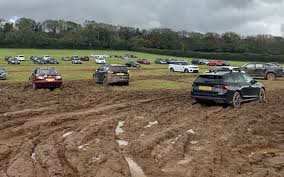


Scotland, the land of dramatic landscapes, ancient castles, and warm hospitality, is a dream destination for millions.
Scotland, the land of dramatic landscapes, ancient castles, and warm hospitality, is a dream destination for millions. From the bustling streets of Edinburgh to the mystical shores of Loch Ness, it offers an unforgettable experience. However, like any country with a rich culture and unique social etiquette, there are certain missteps that can mark you as an uninformed visitor. To ensure your trip is as magical as the Scottish Highlands themselves, here’s a detailed guide on what you should avoid doing during your visit.
When navigating the cities, especially upon arrival, ensure you have a reliable transport plan. If you land at Glasgow Airport, don’t just hop into any car; pre-book a reputable Taxi Glasgow service or research your public transport options to avoid confusion and overcharging. A little planning goes a long way in starting your trip on the right foot.
This is a surefire way to cause a slight wince, if not outright offence. Scotland uses the British Pound (£), but its banknotes are issued by three different Scottish banks (Bank of Scotland, Royal Bank of Scotland, and Clydesdale Bank). These notes are legal currency throughout the UK, though some unfamiliar vendors in other parts of Britain might be hesitant to accept them. The crucial point is to acknowledge their Scottish identity. Call it “Scottish notes” or simply “pounds.” Never refer to it as “English money.”
The Gaelic and Scots origins of many place names can be bewildering. Mispronouncing “Edinburgh” as “Edin-burg” is a classic giveaway. It’s “Ed-in-burrah.” Similarly, the beautiful town of Kirkcudbright is pronounced “Kir-koo-bree,” and Milngavie is “Mul-guy.” Don’t let this intimidate you! Locals appreciate the effort if you try, and they’ll gladly help you get it right. A quick online search for pronunciation before you go can save you some blushes.
Scotland’s history is filled with turbulent, often tragic events. Sites like Culloden Moor, where the Jacobite rising was brutally crushed in 1746, are essentially war graves. Treat these places with the solemn respect they deserve. Avoid loud conversations, running around, or inappropriate photography (e.g., cheerful selfies). The same goes for ancient castles and ruins—they are cherished pieces of national heritage, not playgrounds. Always stick to marked paths and never remove stones or artefacts as souvenirs.
While Scotland has its own strong cultural identity, some tourists conflate it with its Celtic cousin, Ireland. Scotland’s national day is St. Andrew’s Day on November 30th. It’s a celebration of Scottish culture, not Irish. While the two nations share a deep historical connection, they are distinct. Avoid making assumptions or comparisons that begin with “In Ireland, they…” Embrace Scotland for its own unique traditions, music, and lore.
If your trip includes a special occasion like a wedding, a gala, or a prestigious business dinner in a major city, understanding the dress code is crucial. A standard suit might not suffice for a black-tie event. For these occasions, planning your transportation is just as important as your attire. Don’t leave it to chance; arranging a Glasgow Chauffeur Hire service in advance ensures you arrive in style, punctually and without stress, allowing you to focus on the event itself. It’s a touch of luxury that elevates the entire experience.
While Edinburgh Castle and the Loch Ness monster are must-sees, don’t make the mistake of only visiting the spots plastered on postcards. Some of Scotland’s greatest magic lies off the beaten path. Explore the fishing villages of the East Neuk of Fife, hike in the remote Torridon mountains, or discover the artistic community on the Isle of Arran. Venture into a local pub—not just the ones on the Royal Mile—and strike up a conversation. You’ll be rewarded with authentic interactions and memories that last a lifetime.
